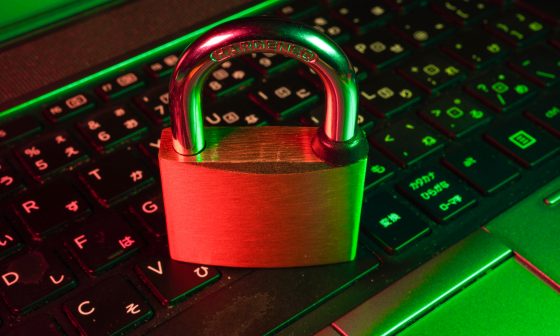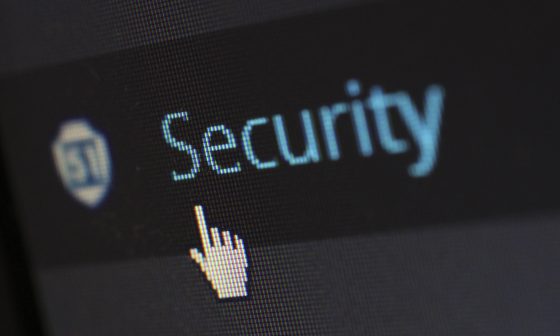SSL certificate inspection refers to intercepting and analyzing SSL-encrypted traffic between the server and client to eliminate malicious content.
The majority of today’s internet traffic is SSL-encrypted. Due to Google’s strive to promote web traffic encryption, we often communicate via secure HTTPS connections. Encrypting traffic safeguards data, so SSL certificate inspection enhances website security.
SSL interception can be either sporadic or always on. It involves decryption and inspection of data going to your servers from your website. The process also repeats for data going from your servers to your websites.
However, malicious people can use these encrypted connections to disperse malware. The malware can extract confidential information from company networks. SSL inspection adds an extra security layer between users and your website to minimize such security risks.
What is SSL Inspection?
Using SSL/TLS in HTTPS ensures better security for traffic with sensitive information. Although this ability benefits user privacy, cybercriminals can leverage this opportunity. Most malware contains HTTPS to cloak the control and command communications.
Transport Layer Security (TLS) and Secure Sockets Layer (SSL) are network protocols. They use encryption to strengthen security in other insecure protocols.
These protocols are popular in HTTPS as tools to secure website traffic. However, their misuse in creating malware makes it a vital component of any company’s cybersecurity strategy.
HTTP transfers data between the user or browser and the server or website in plain text mode. Any person who uses powerful algorithms to intercept the data in transit can access, interpret and interfere with it as they please.
SSL certificates assist by using powerful algorithms to encrypt data in transit to ensure it remains safe. Since all data gets encrypted, even malicious data reaches the intended destination unnoticed.
Certificate Inspection Vs. Deep Inspection
A deep inspection enables administrators to determine the contents of data packets in real-time. It scans the destination and origin address, and any other relevant information as the packets move across the network.
The data passes through a gateway device for scanning and decryption with a deep inspection.
SSL certificate inspection is shallow as it examines the data packet’s header. The header only has the sender’s and recipient’s IP addresses. It doesn’t scan the packet’s application layers, session, or presentation.
SSL certificates encrypt private data for protection. However, the encrypted traffic can help malware bypass normal security defenses.
For instance, you can download contaminated files online or open a phishing email with a downloader file. In such cases, launching the file initiates an encrypted session between your computer and the server.
Since the sessions have encryption, they can bypass your network’s security defenses.
Advantages Of SSL Inspection
SSL certificate inspection ensures better network visibility. It’s possible to monitor incoming and outgoing data and incorporate machine learning/AI security solutions.
Other advantages of SSL inspection are:
Enhanced Security
The primary purpose of SSL inspection is to ensure that only the intended recipient can interpret the data. Since the data remains encrypted, if it falls into the wrong hands, they will be unable to understand the information.
Data Authentication
Since there are numerous data transfer channels on the internet, this data may end with unintended third parties.
SSL assists by ensuring the data reach the appropriate server via the Server certificate. This certificate verifies that the certificate provider is trustworthy.
Better Reliability
SSL certificate inspection helps users verify that your website is legit. SSL authenticate sites have a green lock symbol on the address bar so users can be sure they are real.
The lock displays that your website has reliable security measures to accommodate transactions.
Phishing Prevention
Malicious people often send phishing emails disguised as shipping confirmations and advertisements. Such emails contain a link that redirects you to a different site.
These sites purposefully exist to collect sensitive details such as credit card information. It’s challenging or impossible for these websites to acquire genuine SSL certificates.
The lack of an SSL certificate can deter most users from sharing confidential details.
Online Payments
All payment or credit card companies require that websites receiving payment have an SSL certificate. The certificate should have a minimum of 128-bit encryption to receive payments.
Financial Benefits
Accessing SSL only requires an internet connection via standard web browsers, meaning no software requires installation on the user’s end. Companies can save significantly on software purchase, management, and maintenance.
SEO Rankings
SSL certificate improves your search engine rankings. Google clarified that the algorithm prioritizes websites with SSL certificates on Search Engine Result Pages (SERP).
SSL Inspection Process
The SSL mechanism ensures that data remains encrypted until it reaches the intended destination.
With SSL inspection, an interception device positioned in the middle scrutinizes and sifts through the data. This process happens before the data reaches the intended recipient.
This interception device or the middlebox facilitates all incoming and outgoing data decryption. It eliminates any suspicious data before encrypting the data again and transferring it to the intended user.
SSL inspection is available in two popular forms:
- Firewalls and anti-virus software installed on the users’ computers
- Commercial hardware devices that inspect traffic on enterprise networks. Such devices enable the administrators to track and scrutinize internal data transfers.
It’s essential to note that an SSL certificate can’t differentiate between harmless and malicious data. Cybercriminals use this loophole to conceal various malware, viruses, and spyware.
If attackers use HTTPS channels to steal data, data leaks can remain unnoticed. This enables the attackers to steal documents with sensitive information from company networks.
They can also activate SSL encryption on individual websites to spread the malware. This is because domain validated (DV) SSL certificates only scan domain ownership.
SSL Inspection Tools
SSL inspection tools are available in various forms, such as:
- Network sandboxes
- Firewalls
- Data loss prevention (DLP) solutions
- intrusion detection systems/intrusion penetration systems (IDS/IPS),
- Web gateways
These tools intercept traffic and decrypt and scan the content. They then forward it to a DLP, IDS/IPS, or firewall. Once the results return, the tools re-encrypt the content and send it to the intended destination.
Network Sandboxes
Sandboxing involves using an isolated environment known as a sandbox to run tests. You can execute or initiate suspicious Uniform Resource Locators (URLs) or programs within the sandbox. Once you click on the suspicious link, program, or attachment, you’ll see what happens without exposing the rest of your network.
Network sandboxes protect the entire network from anything running within that environment. Therefore, the sandbox must be secure and should replicate the performance of your server’s CPUs. The aim is to give you the most accurate representation of a real-life scenario.
Sandboxing is an efficient way to protect your network against zero-day threats. Such threats are new, unseen, and unlike any other malware on record.
Firewalls
SSL inspection enables the firewall to allow control features by decrypting SSL and TLS connections. The firewall can scan traffic that would remain invisible without it. SSL certificate inspection also enables the network admin to implement SSL/TLS security at the firewall. It denies connections that use old SSL versions or block outdated ciphers.
Web gateways
A Secure Web Gateway (SWG) refers to software components or hardware devices installed on the network edge or user’s endpoint.
SWG solutions scan traffic for malicious content and malware to prevent unauthorized access. They ensure users only access secure, approved sites, and the others get blocked.
SWG solutions maintain a database with known and approved sites. Web traffic passes through filters before entering or exiting the network.
DLP solutions
Data loss prevention solutions prevent unauthorized data transfer from the organization’s network. These solutions use Deep Packet Inspection (DPI) to scan traffic at the endpoints.
DLP solutions enable organizations to protect sensitive information.
Summary
SSL certificate inspection is an excellent way to protect sensitive data and prevent malicious attacks. However, it’s essential to note that SSL certificates expire and require renewal or replacement. Once they lapse, your website becomes unavailable, detrimental to any business.
The best way to ensure your certificates remain updated is to work with a credible SSL checker. It tracks the certificates’ expiry dates and sends you notifications ahead of time. Signup for a trial with ElevenGuard, the first five servers are free.







1 comment
Comments are closed.